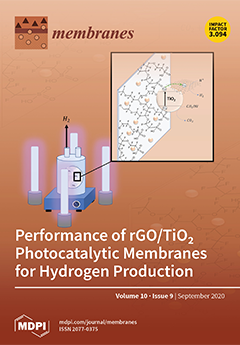Guided bone regeneration was studied to establish protocols and develop new biomaterials that revealed satisfactory results. The present study aimed to comparatively evaluate the efficiency of the bacterial cellulose membrane (Nanoskin
®) and collagen membrane Bio-Gide
® in the bone repair of
[...] Read more.
Guided bone regeneration was studied to establish protocols and develop new biomaterials that revealed satisfactory results. The present study aimed to comparatively evaluate the efficiency of the bacterial cellulose membrane (Nanoskin
®) and collagen membrane Bio-Gide
® in the bone repair of 8-mm critical size defects in rat calvaria. Seventy-two adult male rats were divided into three experimental groups (n = 24): the CG—membrane-free control group (only blood clot, negative control), BG—porcine collagen membrane group (Bio-Guide
®, positive control), and BC—bacterial cellulose membrane group (experimental group). The comparison periods were 7, 15, 30, and 60 days postoperatively. Histological, histometric, and immunohistochemical analyses were performed. The quantitative data were subjected to 2-way ANOVA and Tukey’s post-test, and
p < 0.05 was considered significant. At 30 and 60 days postoperatively, the BG group showed more healing of the surgical wound than the other groups, with a high amount of newly formed bone (
p < 0.001), while the BC group showed mature connective tissue filling the defect. The inflammatory cell count at postoperative days 7 and 15 was higher in the BC group than in the BG group (Tukey’s test,
p = 0.006). At postoperative days 30 and 60, the area of new bone formed was greater in the BG group than in the other groups (
p < 0.001). Immunohistochemical analysis showed moderate and intense immunolabeling of osteocalcin and osteopontin at postoperative day 60 in the BG and BC groups. Thus, despite the promising application of the BC membrane in soft-tissue repair, it did not induce bone repair in rat calvaria.
Full article






